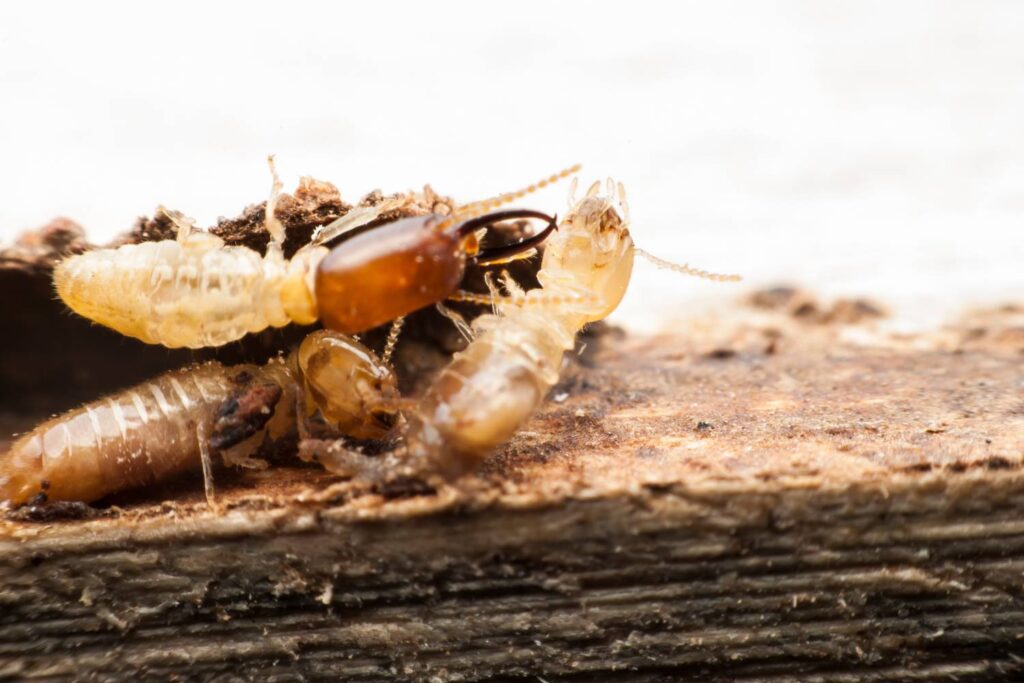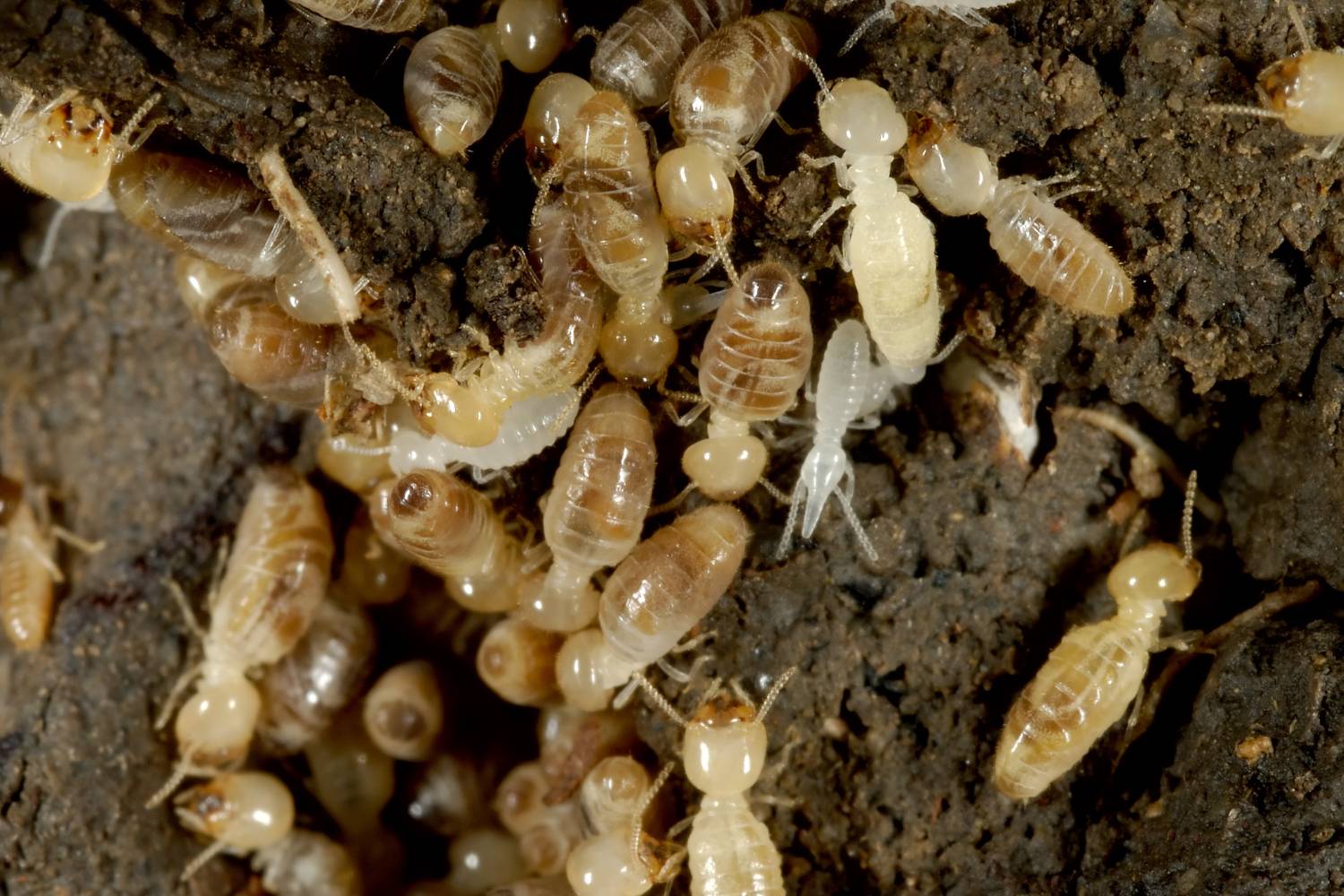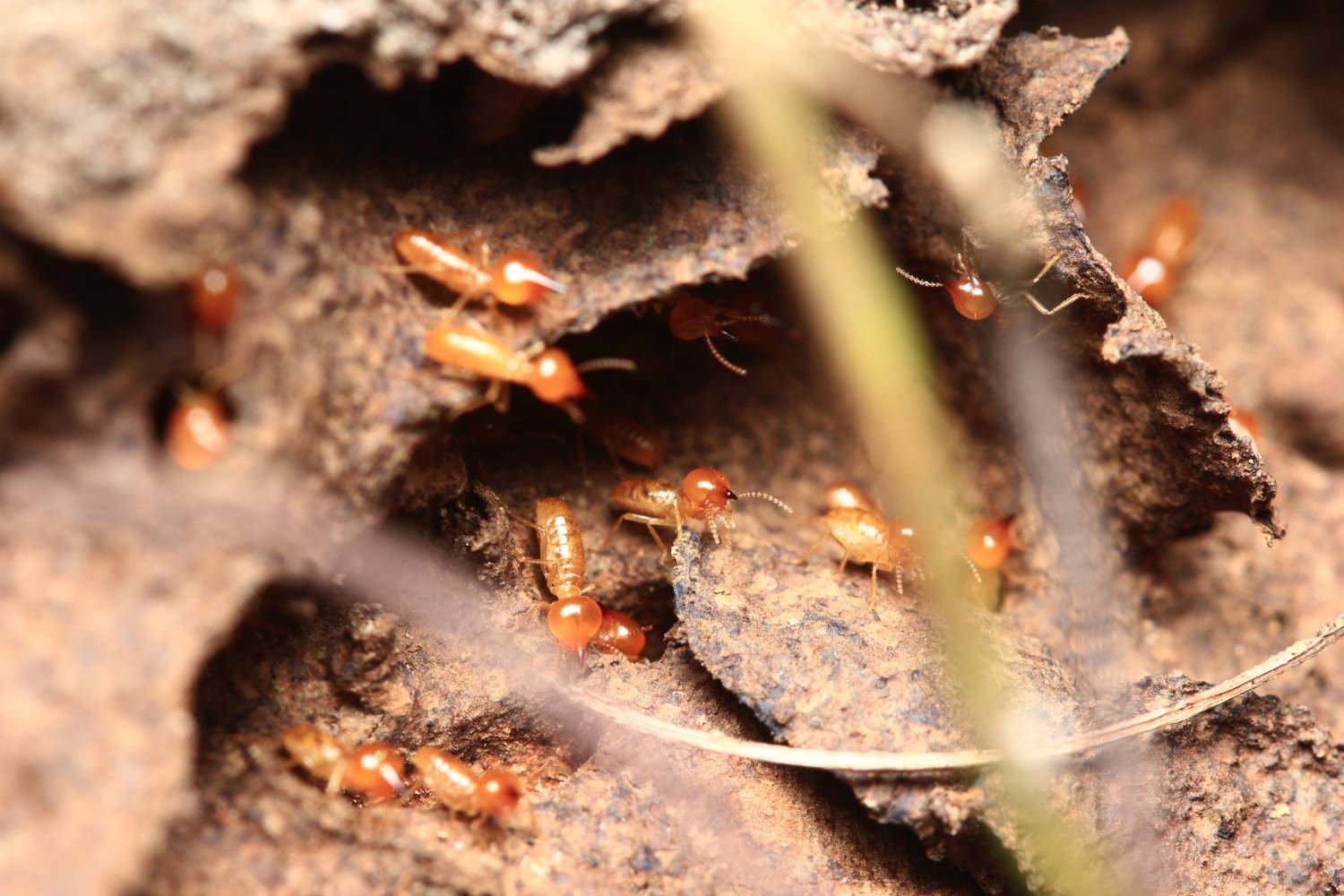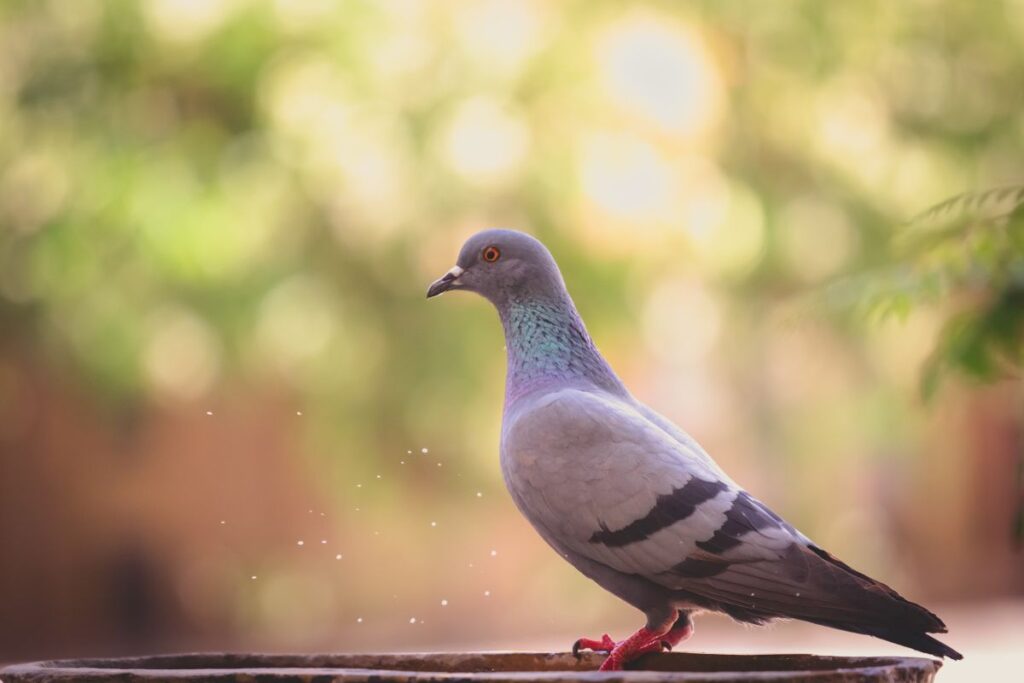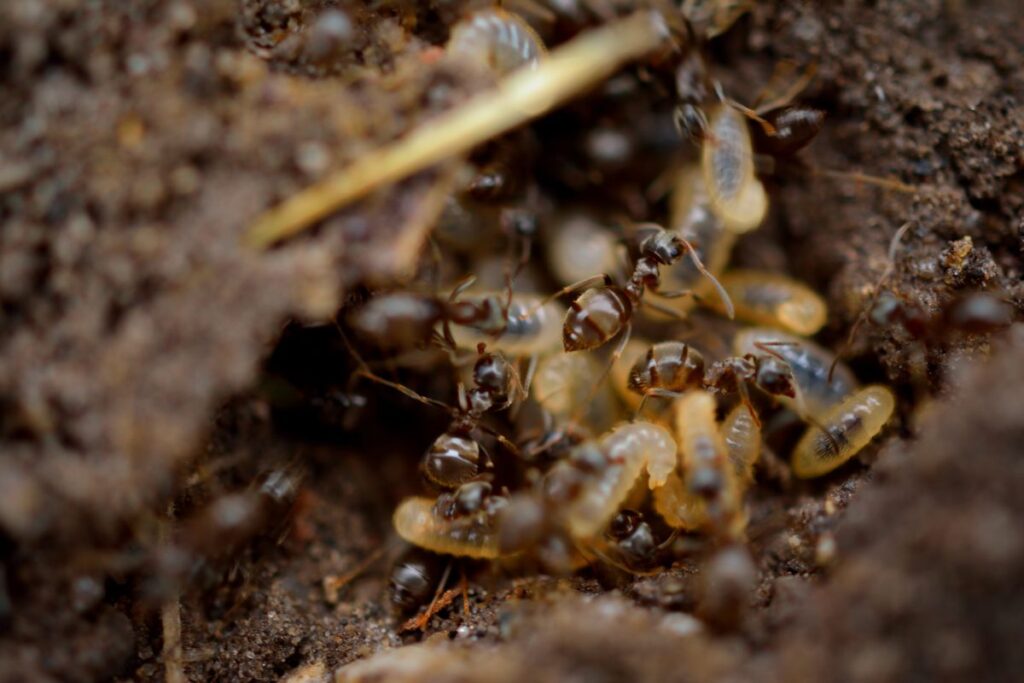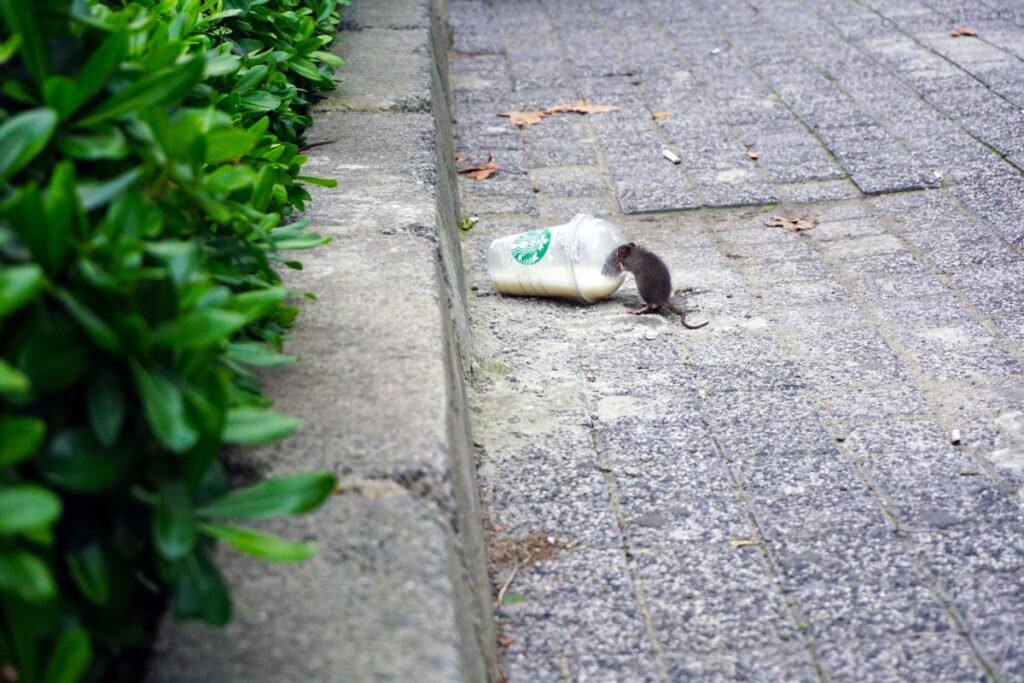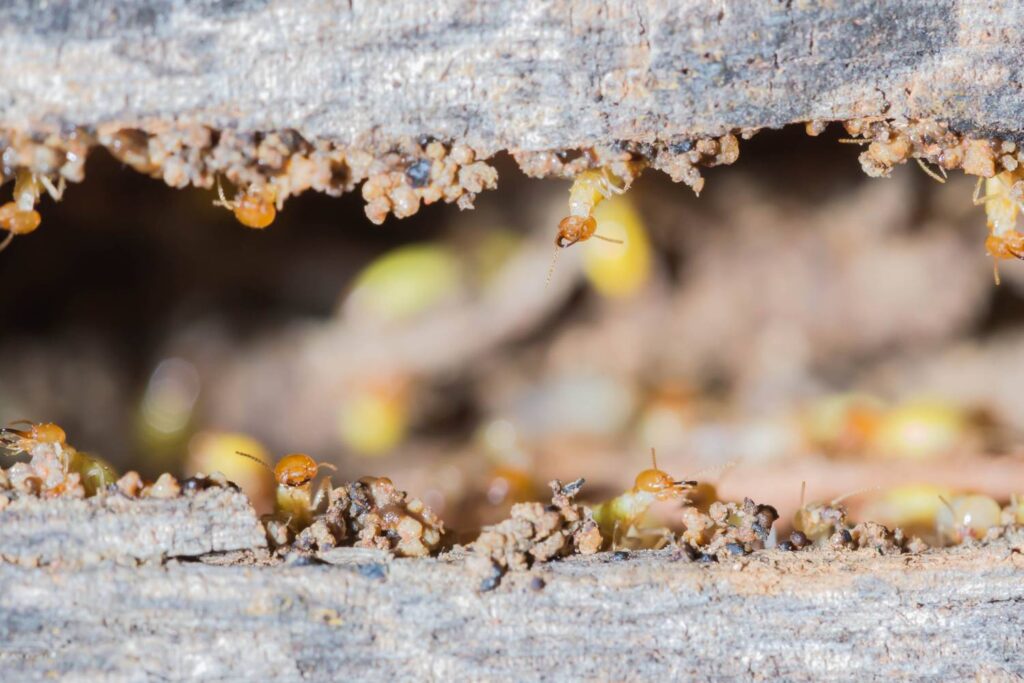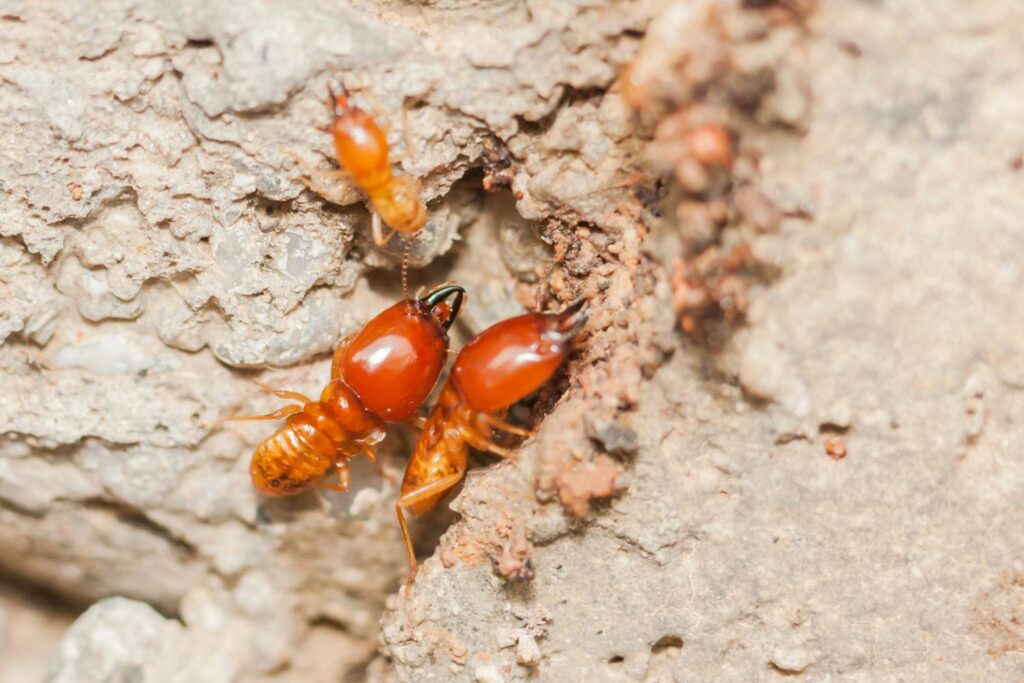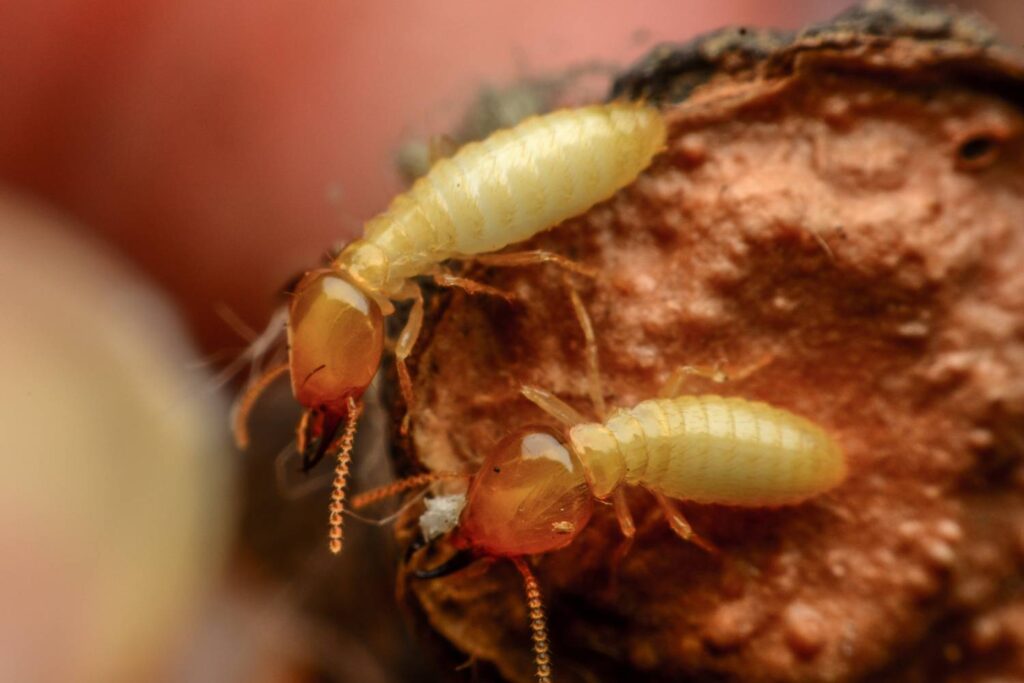Termites originated during the Paleozoic Era, almost 120 million years ago. Their reputation as "silent destroyers" stems from their capacity to quietly gnaw through wood, flooring, and even wallpaper.
Termites destroy more than $5 billion worth of property annually, these expenses are not reimbursed by homeowners' insurance. For this reason, it's critical to perform careful termite management and extermination.
Termite populations emerge worldwide as the ground warms, moving from the South to the North in pursuit of a new structure to infiltrate. They send out their explorers, often called swarmers, to find friendly environments, like houses that might have been damaged by snow or rain throughout the winter.
When swarmers are discovered inside a home, many homeowners may mistakenly believe they are flying ants or winged beetles, which is a major mistake. It's likely that the remainder of the swarmer colony will follow if they decide your house is the ideal place for them to live.
Termites are wingless pests that appear inside dwellings in the early spring. Swarmers, intending to establish a new colony, are usually the first indication of termite season.
Termites’ Life Cycle
A single queen and king form and rule over every termite colony. Over her life, the queen lays hundreds of eggs.
Termites typically form new colonies when swarms of sexuals take off from their nests and travel to different locations. The male and female (the future king and queen) will construct a nest site with a nuptial chamber in which eggs are laid after losing their wings and engaging in a brief courtship.
This can be done by tunneling through wood, excavating a hole in the ground, or finding a crack in the wall. The king and queen will mate after the nuptial chamber is built. Initially, the queen and the king tend to just a small number of eggs that she produces. Usually, the eggs are laid individually. It takes 24 to 90 days for incubation.
In established colonies, there are typically seven nymphal instars, or stages; however, the exact number varies based on temperature, colony age, colony size, and relative humidity. The nymphs could develop into laborers or soldiers.
The lifespan of the worker is one to two years. Sexuals are freed from the colony after a few years, and they go on to start other colonies.
Every termite consumes cellulose, which comes from decaying plant fiber, and many of them grow a fungus in their nests that provides food—particularly proteins—for the queen, king, and offspring.
The size of a colony can range greatly, from a few thousand to millions of people. The type of nest varies as well; subterranean termites create their colonies below earth, drywood termites make their (very modest) nests in wood, and those that build their nests above ground have the ability to produce distinctive mounds.
Know Your Termites
Subterranean termites
This species of termite can have up to 2 million members and dwells in wet, isolated places above ground or in underground colonies. They construct characteristic "mud tubes" to shield themselves from the elements and to obtain access to food sources. The most damaging species are without a doubt subterranean termites.
Formosan Termites
Of the more than 2,000 termite species identified by science, Formosan termites are the most hungry, aggressive, and cunning. They originate from China. Formosans create complex mud nests inside building walls and are arranged into vast underground colonies. Once Formosan termites infiltrate a structure, it can be challenging to control them due to their aggressive behavior.
Dampwood Termites
Dampwood termites, as the name implies, feed on highly moist wood. Generally speaking, dampwood termites are larger than other termite species. Due to the low moisture content of building wood, they rarely infest structures; still, caution must be exercised to prevent luring dampwood termites into a building. The southwest's desert or semi-arid regions, the Pacific coast and its neighboring states, and southern Florida are home to damp wood termites.
Drywood Termites
Drywood termites, in contrast to their underground and Formosan counterparts, do not require contact with soil to feed on dry wood. Dead wood near houses is a common target for this termite species, which also makes nests in wooden materials used for roofing and wall supports. Even though they don't require nearly as much moisture as other species, you can still find them in wood near sources of water, such as a leaking pipe or water heater.
Conehead Termites
Native to the Caribbean, conehead termites are an invasive species. In 2001, they were first brought to the United States. Conehead termites were the new name for them after they were originally referred to as "tree termites," which assisted in dispelling the myth that they are exclusive to trees.
The conehead termite does not travel by underground tunneling, in contrast to most other termites. Instead, they spread swiftly because they feed on the ground like ants do. Conehead termites are a particularly vicious type of termite that is renowned for quickly causing extensive property damage.
What Attracts Termites?
Before you realise it, termites may have harmed your house. They are drawn to environments with wood, dampness, and warmth. The most typical locations for termites to be found are near-ground wooden constructions like decks and home foundations. Because they provide a humid climate, they can also be found in wet places like laundry rooms, bathrooms, spaces next to water heaters, beneath roofs with inadequate ventilation, and behind walls.
Moisture
One of the main things that draws termites to your house is moisture. Rain gutters and hoses left unattended next to wood constructions are also not recommended, nor should wood be kept wet for prolonged periods of time. Termites can squeeze through tiny crevices in door frames, window sills, and any other location where wood and moisture are frequently in contact.
Wood in Contact with the Foundations of Houses
Because it is readily available, termites consume wood that is close to or in contact with foundations. Additionally, it provides the termites with a reasonably safe haven from other environmental dangers like predators. This means that any wood along your foundation, including deck supports, fence posts, and roof beams, should be spaced at least eighteen inches from your home's outer walls.
Cracks on the Outside of Buildings
Termites may pose a threat to buildings due to external cracks that provide them with an easy entrance into the interior wood. These gaps will serve as access locations for termites, who will then exploit wet wood in touch with the framework to make their way through the remainder of the building. These openings ought to be kept closed at all times.
Termite Damage: 6 signs
Although an inexperienced person may not always be able to spot termite evidence, observant homeowners may be able to spot prospective termite problems in and around the house. It's time to get in touch with a pest control expert if you notice any of the following. They can quickly assess the severity of the issue and offer advice on the best course of action.
1. Presence of flying termites, which are sometimes mistaken for flying ants.
2. Termites use mud shelter tubes to get to a food source.
3. Broken wood with filth or muck on it
4. Wings discarded by windowsills or close to doorways
5. Tapping wood that makes a hollow sound
6. Paint that has blistered on wood surfaces
Top 3 Termite Treatments
Fumigation, bait stations, and liquid termiticides are regarded as the best methods for eliminating termites. This is how they function:
Liquid Termite Treatments
Termite prevention using liquid treatments is known to endure for a long time—up to 13 years.
These treatments suppress a variety of pests and have a low odor. Moreover, termites can easily trace them. Your pest control firm rarely needs to reapply liquid treatments.
Bait Systems
Above your house, in the earth, are bait stations. The scientifically created bait starts to eliminate any colonies that are currently in operation.
This manufactured bait's active ingredient serves to stop termites from maturing, and it is roughly 10 times more enticing to them than wood. Termites will perish if they are unable to molt.
A professional's regular maintenance and inspections will guarantee that the baiting system keeps working year after year and month after month.
Fumigation
Tarps will be used to thoroughly cover and seal the property. Fans will be employed in conjunction with the administration of a chemical gas to ensure the gas is fully distributed throughout the residence. Termites in all stages of life will be eradicated by these fumigants.
Following fumigation, the gas is removed from the tarps by opening ventilation areas and utilizing fans.
Keep the Termite Prevention Factors
- The soil around the foundation must be kept dry after construction by maintaining proper drainage and grading, which includes maintaining gutters and downspouts.
- Caulk, grout, or fill any cracks in the cement foundation or places where utilities pass through the wall to reduce the number of openings that termites can use to access the structure.
- Quickly fix any leaks.
- Get plants and other things out of the way of vents.
- Avoid planting trees or bushes too close to the structure or letting them grow up against any exposed wood.
- It is not a good idea to store firewood or wood waste near the house.
- Make sure termite colonies don't set up shop by inspecting your home once a month.
Conclusion
Termites, originating from the Paleozoic Era, are silent destroyers that destroy over $5 billion worth of property annually. They emerge worldwide as the ground warms, moving from the South to the North in search of new structures to infiltrate. Termites have a life cycle of a single queen and king, laying hundreds of eggs and forming new colonies when swarms of sexuals take off from their nests.
They consume cellulose and grow fungi in their nests. Termite species include subterranean termites, Formosan termites, dampwood termites, drywood termites, and conehead termites. Termite management and extermination are crucial to prevent their damage
Termites are attracted to wood, dampness, and warmth, often found near-ground wooden constructions like decks and home foundations. They can squeeze through crevices in door frames, window sills, and other areas. Wood in contact with foundations is also a threat, as termites consume it.
External cracks on buildings provide easy access for termites. Observant homeowners can spot termite damage, and contact a pest control expert if they notice any signs. Treatments include liquid treatments, bait stations, and fumigation. To prevent termite infestation, maintain proper drainage, fill cracks, fix leaks, remove plants from vents, avoid planting trees near the structure, store firewood or wood waste, and inspect your home monthly.
Content Summary:
- Originated 120 million years ago, termites are known for their destructive nature.
- They destroy over $5 billion worth of property annually, not covered by homeowners' insurance.
- Termites emerge worldwide as the ground warms, moving from the South to the North.
- They send swarmers, or explorers, to find friendly environments, often homes damaged by snow or rain.
- A single queen and king form and rule over every termite colony.
- The queen lays hundreds of eggs over her life.
- New colonies form when swarms of sexuals leave their nests and travel to different locations.
- The queen and king construct a nest site with a nuptial chamber for eggs.
- The queen and king lay a small number of eggs, which take 24 to 90 days for incubation.
- In established colonies, there are typically seven nymphal instars, or stages.
- The lifespan of the worker is one to two years.
- Termites consume cellulose from decaying plant fiber and grow a fungus in their nests.
- The size of a colony can range greatly, from a few thousand to millions of people.
- The type of nest varies; subterranean termites create their colonies below earth, drywood termites make their nests in wood, and those that build their nests above ground have the ability to produce distinctive mounds.
- Subterranean termites: Can have up to 2 million members and dwell in wet, isolated places above ground or in underground colonies.
- Formosan termites: The most aggressive and cunning of the over 2,000 termite species.
- Dampwood termites: Feed on highly moist wood and rarely infest structures.
- Drywood termites: Do not require contact with soil to feed on dry wood.
- Conehead termites: An invasive species native to the Caribbean, they spread swiftly due to their ground-feeding behavior.
- Termites are attracted to environments with wood, dampness, and warmth.
- They are found near-ground wooden constructions like decks and home foundations.
- They can also be found in wet places like laundry rooms, bathrooms, spaces next to water heaters, beneath roofs with inadequate ventilation, and behind walls.
- Termites are drawn to moisture, which can be found in rain gutters and hoses next to wood constructions.
- Termites can squeeze through small crevices in door frames, window sills, and other locations where wood and moisture are frequently in contact.
- Termites consume wood that is close to or in contact with foundations.
- Any wood along your foundation should be spaced at least 18 inches from your home's outer walls.
- Termites can pose a threat to buildings due to external cracks that provide them with an easy entrance into the interior wood.
- These openings should be kept closed at all times.
- Presence of flying termites, mud shelter tubes, broken wood with filth or muck, wings discarded by windowsills or close to doorways, tapping wood that makes a hollow sound, and blistered paint on wood surfaces.
- Liquid Termite Treatments: Long-lasting, low-odor, and easily traceable.
- Bait Systems: Scientifically created bait that stops termites from maturing.
- Fumigation: Thorough cover and sealing of the property with fans and chemical gas.
- Maintain proper drainage and grading, caulk, grout, or fill any cracks in the cement foundation or places where utilities pass through the wall.
- Fix any leaks quickly.
- Remove plants and other things from the way of vents.
- Avoid planting trees or bushes too close to the structure.
- Store firewood or wood waste near the house.
Frequently Asked Questions
Termites primarily consume cellulose, which is found in wood and paper products. This can lead to structural damage in homes as they can eat away at wooden elements, wallpaper, and more.
Regular cleaning helps but is not enough to manage termites. Proper management requires specific strategies such as reducing moisture, creating physical barriers, and using termiticides.
If you find termites, avoid disturbing them and promptly contact a professional pest control service to assess the situation and recommend a treatment plan.
Yes, many universities with entomology departments, extension services, and professional pest control organizations offer educational resources about termite biology and management.
After treatment, regular inspections, maintenance to prevent moisture buildup, sealing entry points, and monitoring with bait stations can help prevent termites from returning.

